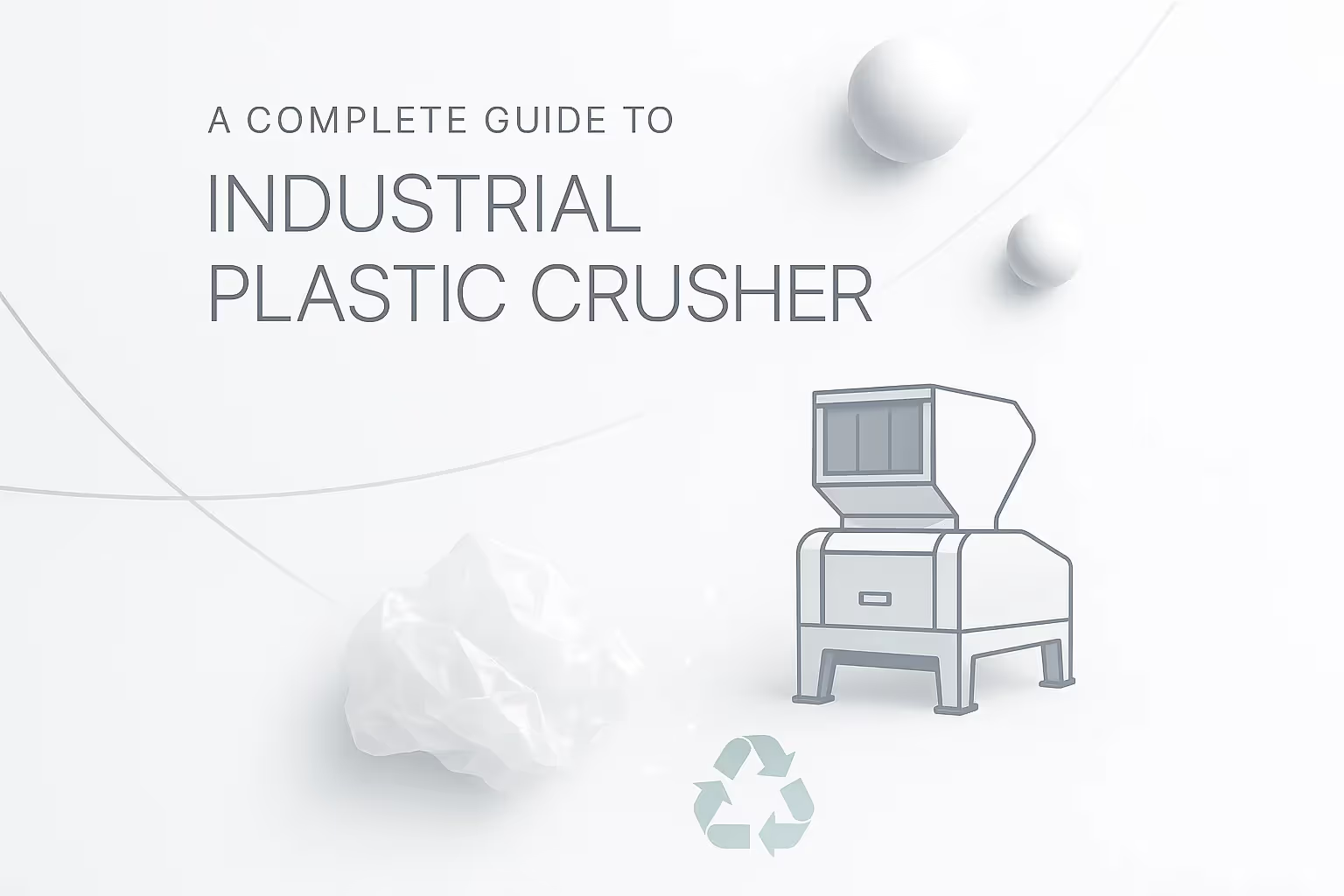Industrial plastic crushers—often called granulators—are the heart of any high‑throughput recycling line. They turn rigid plastics such as PET bottles, HDPE containers, and PP crates into uniform flakes with the right geometry for washing and separation. This guide explains the working principle, the specs that matter, and how to operate and maintain a crusher for consistent output and low cost per ton.
How Industrial Plastic Crushers Work
Inside the cutting chamber are two sets of knives:
- Bed knives: A fixed array mounted to the chamber frame.
- Rotor knives: A moving array mounted on an open rotor driven by an electric motor.
As the rotor spins at high speed, the rotor knives pass the bed knives to create a scissor‑like cutting action. For PET bottle recycling, Rumtoo Machine recommends a double‑scissor arrangement that delivers clean cuts, higher bulk density, and fewer fines. Our open‑rotor designs typically use 10 rotor knives and 4 bed knives for a strong balance of throughput and durability.
At the chamber base sits a perforated screen. Flakes remain in the chamber until they are small enough to pass the screen apertures—commonly 12–18 mm for PET flakes. Selecting the right screen size controls flake geometry for downstream washing and float‑sink separation. After granulation, a blower conveys the flakes to air classification where fines and lightweight label films (PP/PE) are removed.
Tip: Flattened bottles generally produce higher throughput due to easier infeed and better chamber occupancy.
Key Specifications to Evaluate
- Rotor type and diameter: Open rotors shed heat better and handle thin‑wall bottles; larger diameters increase bite and inertia.
- Knife steel and count: Wear‑resistant tool steels and the right knife count maintain cut quality between sharpenings.
- Chamber opening: Wide, low‑profile throats accept bulky containers and reduce bridging.
- Screen design: Quick‑change screens speed maintenance; screen support reduces deformation under load.
- Drive and belts: Soft‑start and overload protection prevent electrical trips; high‑tension belts reduce slip.
- Safety systems: Interlocks on hopper, screens, and chamber doors; emergency stops at operator stations.
Granulator Maintenance Best Practices
Keeping a crusher in peak condition directly improves flake quality and line efficiency.
- Keep knives sharp
- Sharp knives raise throughput (higher bulk density), reduce fines, and produce uniform flakes with clean edges.
- Dull knives create split, feathered flake edges that trap air and float with PP/PE labels in separation tanks, reducing PET yield.
- Maintain the knife gap
- The clearance between rotor and bed knives must be checked and adjusted per the maintenance manual. Correct gap protects edges and lowers energy draw.
- Adopt preventive maintenance
- Train operators to recognize changes in sound, amp load, and flake quality. Do not wait for failures—set calendar‑based inspections for knives, bearings, belts, and screens.
- Stock sharpened knife sets
- Keep multiple sharpened sets ready. Swap quickly during scheduled downtime; send dull sets for sharpening without disrupting production.
- Keep screens clear
- A clogged screen prevents flakes from exiting, causing heat buildup and potential melting that worsens clogging. Inspect and brush screens at the end of each shift with a wire brush.
- Spare parts and planning
- Maintain inventory of critical spares: knives, screens, belts, bearings, and fasteners. Plan maintenance for off‑shifts when possible.
- Never stop with material inside (unless emergency)
- Stopping with bottles/flakes in the chamber can jam the rotor on restart and trip electrical protection. In an emergency stop, clear the chamber before restarting.
- Document and trace
- Implement lot numbers and simple QA records (source of bales, operator, date, weights, PVC/metal checks, equipment setpoints). Traceability accelerates troubleshooting and continuous improvement.
Safety Considerations
- Emergency stops: Place E‑stops at conveyors, crusher, and downstream washers/dryers.
- Training: Provide formal safety and operation training for all operators and maintenance.
- Noise control: Use sound‑dampening hoods/enclosures to meet local exposure limits.
- Dust and ventilation: Fit cyclones, blowers, and dryers with proper dust extraction and ensure adequate ventilation across the line.
Conclusion
This guide isn’t a replacement for your operation manual, but it covers the practices Rumtoo Machine sees in top‑performing PET and polyolefin plants worldwide. With sharp knives, correct gaps, clear screens, and disciplined preventive maintenance, your industrial plastic crusher will deliver consistent flake quality, higher yields in separation, and fewer unplanned stops.
Planning a new line or upgrading an existing crusher? Contact Rumtoo Machine for sizing assistance, knife sets, and maintenance kits tailored to your throughput and materials.
